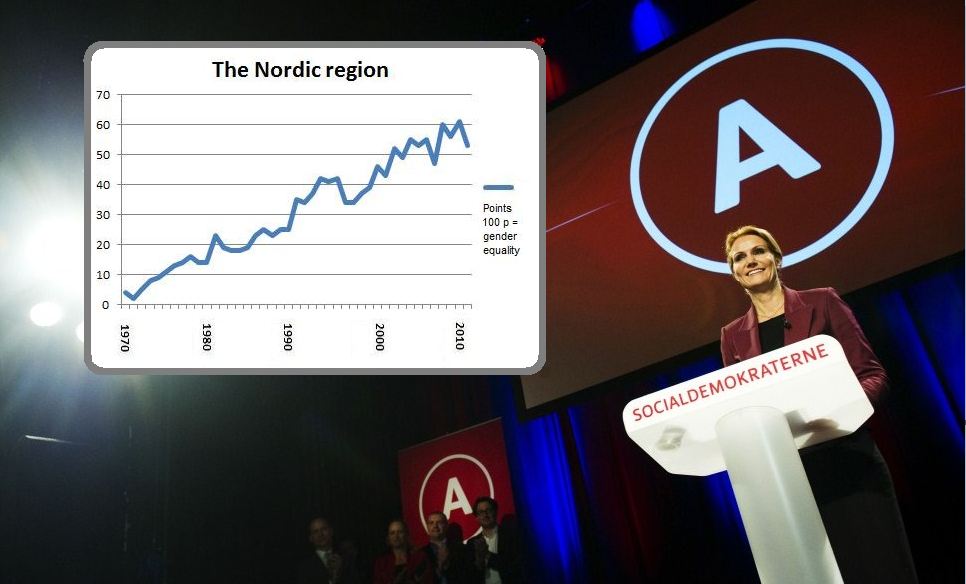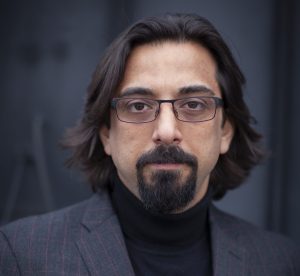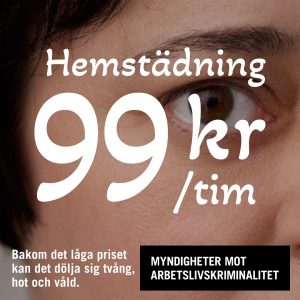The Nordic Labour Journal presents its gender equality barometer for the second year running. It shows which sex has the power in the most important and most symbolic positions within politics and in working life.
We look at 24 positions (see a detailed list in the box on the right) within politics, the social partners and certain symbolically important positions like arch bishop, head of the central bank and commander-in-chief.
We award different points to the various positions. The post of prime minister gets the top score of five points. Each country gets a total of 40 points, or 200 points for the whole of the Nordic region. Gender equality is achieved either if women in one country get 20 points or when they get 100 points across the Nordic region.
So far Nordic women have not got more than 61 points at the most. In other words – they have not reached more than 61 percent gender equality within the positions of power which we look at. That top was reached in 2011, while this year’s figure of 53 represents a fall of eight points.
Finland from top to bottom
Last year Finland was the most gender equal Nordic country, when women got 15 out of 40 points. Since the aim is half of the power, or 20 points, Finnish women had reached 75 percent equality.
This was largely down to the fact that both the president and the prime minister were women last year. On 1 March Tarja Halonen stepped down as president and was replaced by Sauli Niinistö. Mari Kiviniemi’s Centre Party was one of the big losers during the Finnish parliamentary elections on 17 April 2011. Because of a drawn-out process ending with a six-party coalition government, Mari Kiviniemi did not step down as prime minister until 22 June. She had then been serving for exactly one year. Jyrki Katainen from the National Coalition Party formed a new government instead. One small comfort is the fact that his government has Finland’s first female finance minister, Jutta Urpilainen. But in total Finland fell from 15 to seven points.
Denmark tops our barometer with 14 points, due to Social Democrat Helle Thorning-Schmidt’s victory in parliamentary elections there. The country also has a female head of state in Queen Margrethe.
First female arch bishop
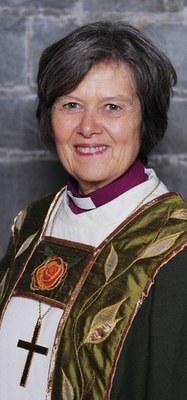 There have been no elections in the other Nordic countries, but there have been changes to the allocation of points nonetheless. Norway’s head of police Ingelin Killengren has stepped down, after being the only woman in that position so far. But at the same time a new position within the state church has emerged, called preses, which in reality means Norway has got an arch bishop. The first person to hold that post is Helga Haugland Byfuglien, who was made preses on 2 October 2011.
There have been no elections in the other Nordic countries, but there have been changes to the allocation of points nonetheless. Norway’s head of police Ingelin Killengren has stepped down, after being the only woman in that position so far. But at the same time a new position within the state church has emerged, called preses, which in reality means Norway has got an arch bishop. The first person to hold that post is Helga Haugland Byfuglien, who was made preses on 2 October 2011.
The position of commander-in-chief remains the only position in our survey which has yet to be held by a woman. In Finland the president is the head of defence, so Tarja Halonen has already held that position. We have nevertheless chosen to wait with awarding points to Finland until General Ari Puheloinen, who heads Finland’s armed forces, gets a female successor. Iceland has no armed forces, so instead we count their head of the coast guard. Island has very few government ministers, which means the points will differ somewhat there.
Female trade unions bosses
For a short amount of time in 2011 – 12 days – all of Sweden’s three major trade unions were led by women. Wanja Lundby-Wedin has been the president of the Swedish Trade Union Confederation since 2007 and Anna Ekström has been leading the Swedish Confederation of Professions since 2001. On 11 May Eva Nordmark took the helm of the Swedish Confederation for Professional Employees (TCO). On 23 May Anna Ekström changed jobs and became the director general of the Swedish National Agency for Education.
If anyone raised an eyebrow over the female dominance within the unions – if nowhere else but in Finland, where a woman has never headed any of the three largest unions – it is a situation which Norwegians got used to many years ago. For six years, starting in 2001 with Gerd-Liv Valla becoming head of the Norwegian Confederation of Trade Unions, all the three main trade unions were run by women, with Randi Bjørgen at the Confederation of Vocational Unions and Christl Kvam at the Federation of Norwegian Professional Associations.
Parliaments still have a way to go
You could argue all female government ministers should be part of our survey, but real power is often concentrated within an inner circle. We have chosen ministries according to those which are cooperating in the Nordic Council of Ministers and according to the committee structures within parliaments.
While there is no clear change of trend in our equality barometer, the reduction in female representatives highlights the fact that it takes time to achieve gender equality. The Nordic countries are leading the pack when it comes to the gender balance in parliaments, with 42 percent women across the region.
15 years ago that number was 36 percent. If this trend continues it will still take another 16 years before there is complete equality between the sexes in the Nordic countries, and 27 years before the rest of the world arrive at today’s Nordic level of just above 40 percent women.
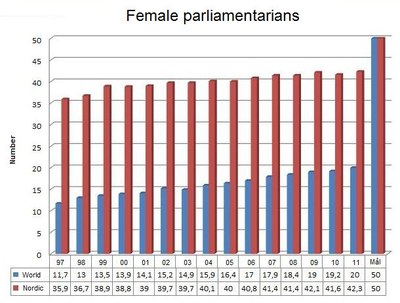
The graph shows the percentage of female parliamentarians. The blue pillars represent the world, and the red represent the Nordic region. The pillar on the far right shows the goal of an equal percentage.
Source: www.ipu.org

